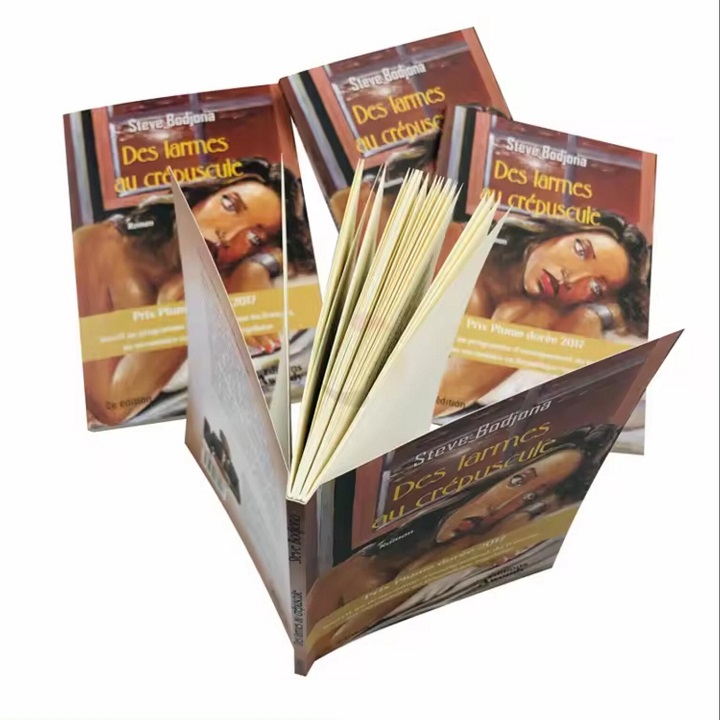Content Menu
● History of Paperback Books
● Design and Production
● Advantages of Paperback Books
>> Portability and Affordability
>> Accessibility
>> Environmental Impact
● Challenges and Future
>> Digital vs. Physical
● The Role of Independent Bookstores
● The Impact of Social Media
● Book Cover Trends in 2025
● Conclusion
● Frequently Asked Questions
>> 1. What is a paperback book?
>> 2. What are the historical origins of paperback books?
>> 3. What are the main differences between paperback and hardcover books?
>> 4. What are the current trends in paperback book cover design?
>> 5. How do independent bookstores influence the popularity of paperback books?
>> 6. What role does social media play in promoting paperback books?
>> 7. How do paperback books compare to e-books in terms of environmental impact?
>> 8. What are mass market paperbacks, and how do they differ from standard paperbacks?
>> 9. Why are hardcover books often released before paperback versions?
>> 10. How have book cover designs evolved over time?
● Citations:
Paperback books have been a staple in the literary world for centuries, offering readers an affordable and portable way to enjoy their favorite stories. From their early beginnings in the 19th century to their modern-day popularity, paperbacks have evolved significantly, becoming a preferred choice for many readers. This article explores the history, design, and appeal of paperback books, including their advantages over hardcover books and how they continue to thrive in the digital age.
History of Paperback Books
The concept of paperback books dates back to the early 19th century when British and German publishers began producing cheaper, smaller versions of popular books for railway travelers. These early paperbacks were designed to be compact and affordable, making them accessible to a wider audience.
Early Innovations:
Routledge & Sons and Reclam were among the first publishers to successfully market these new paperback books.
In 1935, Penguin Books revolutionized the paperback market by reprinting classics in large print runs, often around 20,000 copies.
Design and Production
Paperback books are characterized by their flexible covers made from thick paper or paperboard and glue binding, which contrasts with the stitched or stapled covers of hardcover books. The paper quality varies, with trade paperbacks often using acid-free paper, while mass-market paperbacks use lower-quality paper to keep costs down.
Book Cover Design:
Modern book covers often incorporate minimalism, botanicals, and intertwining text to create visually appealing designs.
Real photos and double exposure techniques are also popular for adding depth and emotion to covers.

Advantages of Paperback Books
Portability and Affordability
Paperback books are significantly lighter and cheaper than hardcover books, making them ideal for readers on the go. This portability and affordability have contributed to their widespread popularity, especially among casual readers and those who prefer to carry multiple books at once.
Accessibility
The lower production costs of paperbacks allow publishers to make books more accessible to a broader audience. This accessibility has been crucial in expanding literacy and promoting reading habits worldwide.
Environmental Impact
While both paperback and hardcover books have environmental impacts, paperbacks generally require less material and energy to produce, making them a slightly more sustainable option for readers concerned about their carbon footprint.
Challenges and Future
Despite their advantages, paperback books face challenges in the digital age. E-books have become increasingly popular, offering readers the convenience of carrying multiple titles on a single device. However, many readers still prefer the tactile experience of physical books, ensuring that paperbacks remain relevant.
Digital vs. Physical
E-books offer convenience and space-saving benefits but lack the sensory experience of physical books.
Paperbacks provide a tangible reading experience but require physical storage space.

The Role of Independent Bookstores
Independent bookstores have played a crucial role in promoting paperback books. These stores often host book signings, author events, and book clubs, fostering a sense of community among readers. They also provide personalized recommendations, helping readers discover new authors and genres.
Community Building:
Independent bookstores serve as hubs for book lovers, offering a space for discussion and connection.
They often partner with local authors and publishers to promote local literature.
The Impact of Social Media
Social media platforms like Instagram and TikTok have become influential in promoting paperback books. Book bloggers and influencers share photos of their favorite books, often using visually appealing aesthetics to highlight cover art and interior design. This online community has helped increase visibility for lesser-known authors and titles.
Bookstagram:
Bookstagrammers use hashtags like #bookstagram and #booksofinstagram to connect with other readers.
They often participate in reading challenges and share reviews to engage with their followers.
Book Cover Trends in 2025
In 2025, book cover trends include bold typography, animated covers, eco-conscious materials, and minimalist designs with clever uses of negative space. Designers are blending nostalgic elements with modern aesthetics to captivate a broad audience.
Minimalism: This trend continues to dominate with stark, uncluttered designs that communicate more with less, using bold colors and ample whitespace to create a strong impression[2].
Eco-Friendly Innovations: Modern covers incorporate recycled materials and eco-friendly inks, reflecting a commitment to sustainability[2].
Interactive Features: With advancements in technology, interactive elements such as AR and QR codes are becoming standard, enhancing reader engagement[2].

Conclusion
Paperback books have come a long way since their inception, offering readers a unique blend of affordability, portability, and accessibility. While they face competition from digital formats, their enduring appeal lies in their tactile nature and the joy of sharing physical copies with others.
Frequently Asked Questions
1. What is a paperback book?
A paperback book is a book with pages bound in a flexible paper cover, often less expensive and more portable than hardcover books[1][7].
2. What are the historical origins of paperback books?
The concept of paperback books began in the 19th century with British and German publishers producing cheaper versions for travelers[1][7].
3. What are the main differences between paperback and hardcover books?
Paperback books have flexible covers, are lighter and cheaper, while hardcover books have rigid covers, are more durable, and often more expensive[3][6].
4. What are the current trends in paperback book cover design?
Trends include minimalism, bold typography, eco-friendly materials, and interactive features, blending nostalgia with modern aesthetics[2][5].
5. How do independent bookstores influence the popularity of paperback books?
Independent bookstores promote paperbacks through events and personalized recommendations, fostering a community among readers[3].
6. What role does social media play in promoting paperback books?
Social media platforms like Instagram and TikTok increase visibility for paperback books through visually appealing posts and online communities[2].
7. How do paperback books compare to e-books in terms of environmental impact?
While both have environmental impacts, paperbacks generally require less material and energy than hardcover books but more than e-books[6].
8. What are mass market paperbacks, and how do they differ from standard paperbacks?
Mass market paperbacks are smaller, less durable, and cheaper, often found in non-traditional book-selling locations, whereas standard paperbacks are larger and more durable[4].
9. Why are hardcover books often released before paperback versions?
Hardcover books are released first to capitalize on initial demand and higher profit margins, with paperbacks following later at a lower price point[3][10].
10. How have book cover designs evolved over time?
Book covers have transitioned from purely functional to artistic and marketing tools, incorporating various trends like minimalism and eco-friendliness[2][8].
Citations:
[1] https://theprint.blog/paperback/
[2] https://spines.com/book-cover-trends-analysis-staying-ahead-in-2024/
[3] https://www.9thstreetbooks.com/hardcover-vs-paperback/
[4] https://www.publishpros.com/standard-paperback-vs-mass-market-paperback/
[5] https://miblart.com/blog/book-cover-trends-this-year/
[6] https://www.formaxprinting.com/blog/difference-between-hardcover-and-paperback-books
[7] https://en.wikipedia.org/wiki/Paperback
[8] https://damonza.com/9-book-cover-design-trends-for-2024/
[9] https://www.instantprint.co.uk/printspiration/be-inspired/paperback-book-vs-hardcover-book
[10] https://www.adazing.com/what-is-a-paperback-book/
































